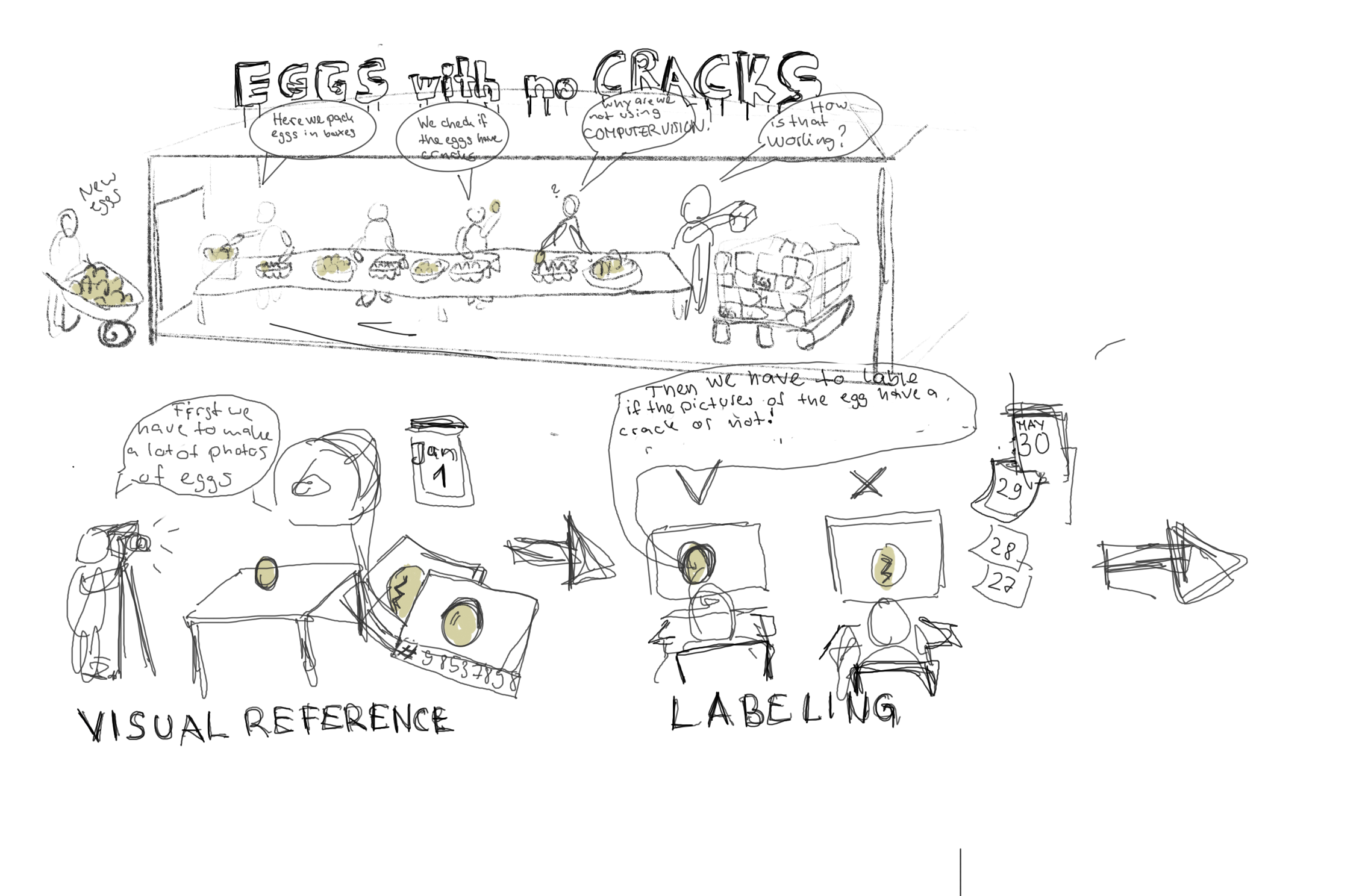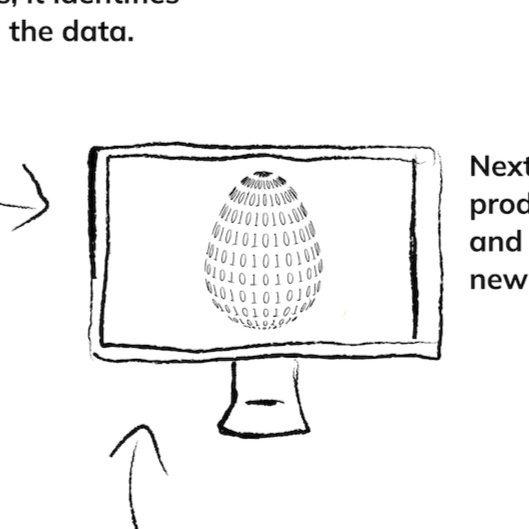
Cracking the Mysteries of
Computer Vision
This project is undertaken as part of the Data Visualization course led by Gemma Busquet in the Master's program Data Design at ELISAVA Barcelona. Collaboratively realized with Claudia Chiang Barra. The exercise was to create an engaging infographic of the complex topic of computer vision through captivating visualizations and appealing design elements.
Explaining complex topic visually
A field often shrouded in complexity but made accessible through a visual explanation. Simple explanations, engaging visualizations, and visually appealing design, to invite you to embark on a journey that demystifies this groundbreaking technology of computer vision.
Realisation
In creating the visual explanation for computer vision, we conducted thorough research. Instead of using common examples like apples and cats, we deliberately chose a different one that's distinct yet still allows us to explain concepts like bias. An egg. The next step involved sketching out ideas, opting for simple line drawings instead of technical representations to make the complex topic more accessible to a broader audience. As we refined the sketches, it became evident that the layout played a crucial role in conveying the process of how computer vision works in a way that's easy to understand for everyone. And as well integrating today's applications, energy consumption, and biases with out dominating the Infographic.
Finalisation
With the title "Cracking the Mysteries of Computer Vision," we embark on an exploration that's both informative and engaging. With nods to computer hacking language and a symbolic egg motif, we aim to intrigue and inform.
As you navigate from the top left to the right, following the F-pattern, you'll notice our intentional layout choices. The F-pattern, mirroring natural reading habits, ensures smooth readability and comprehension.Placing our heading in the top-left corner serves as a focal point and then next to it the introductional text guiding you into the heart of the topic.
Following the illustrations, the explanation proceeds step by step, elucidating how computer vision operates with simple illustrations and a universally recognized object. In the first step of the example, the computer utilizes images of eggs sourced from various places, each labeled by humans to enable data analysis.
In the second step, the computer interprets the images as numerical patterns, with labeling guiding its recognition of specific patterns representing eggs in the picture.
Moving to the third step, through repeated iterations, the computer successfully identifies the egg within the data.
In the fourth step, the computer generates a model and validates it using new images.
However, the model's effectiveness is solely dependent on the quality of the data used for its construction. Following the initial attempt, it learns from feedback and iterates to refine the model.
The example choosen subtly introduces the concept of Bias in Computer Vision, which is further elucidated in a paragraph below.
In the lower section of the poster, three examples of today's computer vision applications are depicted, each accompanied by an illustration. These include Face Recognition, Self-Driving Cars, and Medical Imaging, along with brief explanations of how they utilize computer vision.
Adjacent to these examples are texts discussing the energy demand of AI and Bias challenges in computer vision.
Final Result
Click on picture below to expand or download Crack the Mysteries of Computer Vision as PDF.
Sources:
Mims, C. (2023) "Al Is Ravenous for Energy. Can It Be Satisfied?". The Wall Street Journal. https://shorturl.at/kwHL5
Kleinman, Z. & Vallance,C. (2023) "Warning Al industry could use as much energy as the Netherlands". BBC News. https:/shortur.at/pzRX3
Lazzaro, S. (2021, August 11). How computer vision works — and why it's plagued by bias. VentureBeat. https://shortur.at/cLU35
Google Cloud Tech (2019) "How Computer Vision Works" https://shorturt.at/bhzC8n, Self-Driving Cars, and Medical Imaging, along with brief explanations of how they utilize computer vision.










